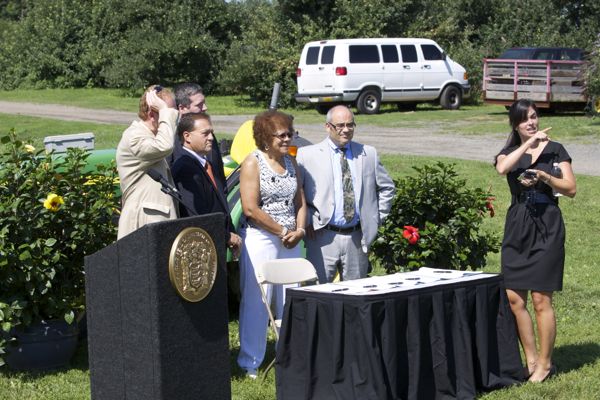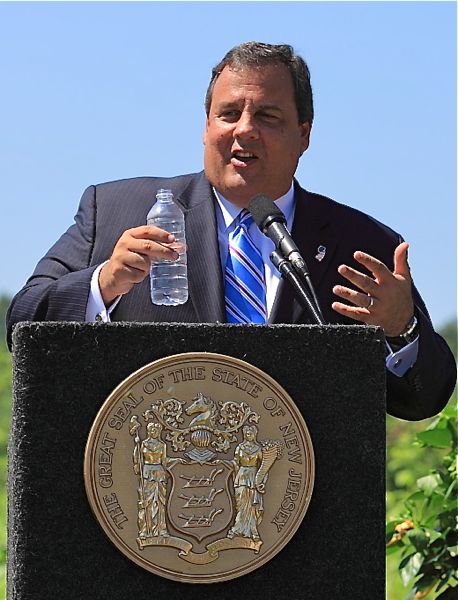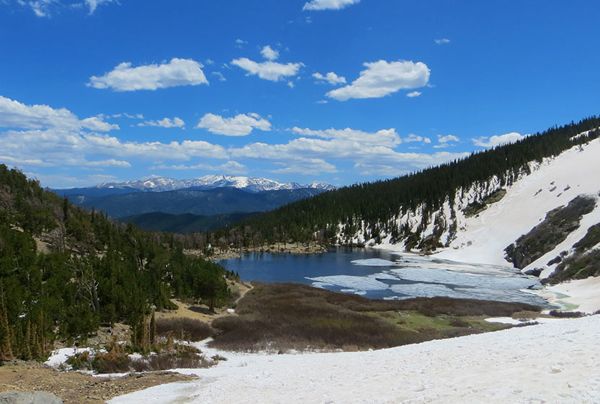State regulators in Michigan were criminally indicted for similar corrupt practices
DEP Science Advisory Board Refuses To Correct Errors
Well, the deputy walks on hard nails and the preacher rides a mount
But nothing really matters much, it’s doom alone that counts. ~~~ Shelter from the Storm, Bob Dylan
Documents discovered in an Open Public Records Act (OPRA) request shed new light on the Christie DEP’s Highlands Septic Density rule proposal and the science supporting the proposal.
I’ve previously written about and filed a federal Data Quality Act complaint to the USGS regarding flaws, limitations, and lack of independent Quality Assurance and Quality Control (QA/QC) of the Private Well Testing Act (PWTA) data that comprises 96% of the data relied on by the USGS statistical study of Highlands groundwater nitrate data.
The USGS complaint relied on DEP’s own Private Well Testing Act Report that explicitly flags the QA/QC problem. The DEP’s Private Well Testing Act Report warns about lack of QA/QC and other limitations and flaws in the PWTA data (see page 5, “Limitations of the Data”)
Analysis and Data Reporting – The PWTA Program testing data are submitted electronically and are automatically entered into the database without any quality control or quality assurance reviews. It is assumed that the certified laboratory properly met all required protocols and the data are accurate. The PWTA Program relies on the reporting laboratory to catch and correct any data entry errors.
The USGS study is the exclusive basis that DEP relied upon to propose rollbacks in the Highlands Septic Density standards in the Preservation Area. The flawed PWTA data comprise 96% of the USGS study data.
Subsequent to filing the USGS complaint, I filed an OPRA request for DEP emails and documents regarding the USGS study.
One of the documents I discovered from the OPRA request was a 2009 DEP study by the Division of Science and Research, titled: The New Jersey Private Well Testing Act: An Overview (April 2009).
That DEP study found that the PWTA data had severe limitations, lack QA/QC, and was riddled with errors.
I have brought this study to the attention of the Chair of the DEP’s Science Advisory Board (SAB), Dr. Judith Weis of Rutgers University. (email exchange with Dr. Weis provided upon request).
I complained to Dr. Weis that the August 2014 Report by the SAB she Chairs erroneously characterized the Private Well Testing Act data with respect to QA/QC and requested that she look into and correct that error. Specifically, the SAB Report states this falsehood:
The model was based on two sources. Data were obtained from 352 wells in the USGS National Water Information System (NWIS). These data have been well qualified by QA/QC procedures, but do not sufficiently cover the geographical area and/or the range of land use characteristics. To supplement these data, results from an additional over 19,000 wells were obtained from the Private Well Testing Act (PWTA) program. These were aggregated into 4,379 2000-foot-square cells and combined with the USGS data. The analyses in the PWTA dataset were conducted by NJDEP-certified laboratories, although they were not as fully qualified as were the NWIS data.
The SAB Report’s characterization of PWTA data as “not as fully qualified” as USGS data is incomplete, false and misleading and contradicts specific findings in prior DEP Reports on the PWTA data that were issued in 2004 and 2008, as well as the more recent DEP DSR Report of April 2009.
I’ve specifically written to Dr. Weis, provided this DEP science, and demanded that this error be corrected, but she has failed to do so.
State regulators in Michigan were criminally indicted for similar corrupt practices regarding science and data and “burying” relevant Reports, see:
Six more Michigan employees charged with misconduct in Flint water crisis
The Health and Human Services employees—Nancy Peeler, Robert Scott and Corrine Miller—all face charges of misconduct in office, conspiring to commit misconduct in office and willful neglect of duty, according to Schuette. They allegedly hid or disregarded test results that showed high lead levels in Flint residents’ blood.
An investigator from Schuette’s office said in court Friday morning that Peeler and Scott, who work in the department’s program to prevent lead poisoning in children, conspired with others “to effectively bury” a report from an epidemiologist that warranted more investigation, according to the Detroit News. Miller, the state’s head epidemiologist, allegedly ordered a department employee to ignore the findings of high lead levels and take no action.
No need to take my word for it on the PWTA errors – here is an excerpt from that DEP DSR April 2009 study (boldface emphases mine):
Data limitations
The quality of NJDEP’s PWTA database is adversely affected to an unknown extent by several factors. There is no agency responsible for verifying that the data from all real estate transactions (sales and leases) subject to the PWTA are reported to the NJDEP. Therefore, some data is likely missing. Some data that were initially rejected by the E2/COMPASS quality control system were not resubmitted, despite NJDEP efforts to have these data resubmitted. One laboratory failed to submit data over a 3-year period, although this is believed to be an isolated case.
There are errors in the reported data as well. The PWTA relies on the sampling and testing laboratories for proper conduct of sampling, testing, and data accuracy. As previously stated, all laboratories performing PWTA analysis must be certified. That is, they are required to successfully complete periodic performance evaluations. Certification presumably reduces sampling and analysis errors. Nevertheless, there is no ongoing quality control of the data, either following sample collection, during or after testing, or in reporting results to the client or during electronic entry to the NJDEP database. It is not known how many errors exist in the non-location aspects of the data. As one example, it is suspected that, contrary to PWTA regulations, collection of lead samples from unflushed water tanks or spigots is the primary reason why many elevated lead results were reported. NJDEP personnel periodically evaluate the data and, through contact with the submitting laboratories, correct data submissions. This process also reduces the amount of errors.
There is no GPS certification program for samplers who collect GPS coordinate information. As a result, there were numerous GPS errors, especially during the first year of sample collection. For example, many GPS coordinates were not located in the correct municipality let alone the correct property. Because much of the data analysis relied on accurate well location information, the NJDEP spent approximately one man-year (full time equivalent) correcting well location errors, including address, municipality, county, block and lot and GPS coordinate information for wells sampled from PWTA inception (September 2002) through April 5, 2007. This was done using an electronic, subscription-based, tax parcel website, eTaxmaps.com, to correct block and lot as well as address information errors. Once those errors were corrected, the data for each municipality was organized by block and lot to look for GPS errors. GPS errors were corrected using ArcMap® 9.2 software (ESRI Inc., Redlands, CA) and the following data layers: county and municipal boundaries, county tax parcel boundaries (available for 17 of the 21 counties), NJ roads (from Tele Atlas North America, Inc., v 9.1, April, 2007), and 2002 high-resolution infrared orthophotography (1 foot Ground Resolution Distance). For repeat samples of the same well, identical GPS coordinates were offset 1 foot to distinguish these samples on high resolution maps and to enable certain geospatial statistical analyses. A copy of the database with the correct well location information was created in Microsoft Access®. Because of the extensive location errors, the NJDEP subsequently provided GPS training to all PWTA-certified laboratories.
The PWTA requires just one sample and test during a real estate transaction. No confirmatory sampling and testing that might verify the accuracy of the results from the initial sample is required. However, as of April 5, 2007, 9 % of the tested wells have been tested more than once due to multiple real estate transactions and other reasons.
Wells may be contaminated with pathogens or chemicals that were not among the tested parameters. The list of tested parameters was selected based on known or potential broad-based contamination concerns in NJ, but the list is by no means comprehensive in terms of contaminants that have been identified in ground water in NJ or elsewhere. However, the presence of some of the parameters in excess of the standard may be considered as an indicator of the possible presence of other non-tested contaminants. For example, if fecal coliform or E. coli are detected, the well is considered to be contaminated with fecal wastes from either humans or animals. Such wastes may include one or more of a variety of potentially pathogenic microorganisms such as Salmonella, Shigella, enteric viruses, Giardia or Cryptosporidium. The presence of VOCs may indicate a higher likelihood that some other man-made chemical contaminants may be present.
Information on well depth was not collected in the PWTA database in most cases. This information would have been helpful to more accurately assess the impact of specific geologic formations on ground water quality. Well construction information, specifically permit application information and, in some cases, well drilling record information, is available for many of the wells in NJDEP’s other electronic databases (NJEMS and Hiview). These databases include well identification numbers and well depth information, but it was not possible to transfer this information into the PWTA database (over 50,000 wells) on a well-by-well basis.
Having the well drilling record information or at least the permit application information for all wells rather than for just 5 % in the PWTA database would have assisted data analysis in many cases where there were multiple data records for the same address, block and lot. In some of these cases, it was not certain whether a single well was tested more than once, or there was more than one well at that location, with each well tested just once.
The PWTA addresses NJ ground water quality but not quantity concerns. However, statewide water quantity concerns are addressed through other NJDEP Division of Water Supply programs and through implementation of the NJ Statewide Water Supply Master Plan.




